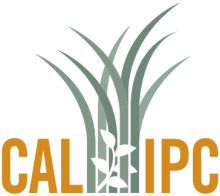Climate Matching Map
| Attachment | Size |
|---|---|
| ClimateMatch_CA_Chasmanthe_bicolor.pdf (1.09 MB) | 1.09 MB |
1. Question 1
2. Question 2
Australia Virtual Herbarium:
https://avh.ala.org.au/occurrences/search?taxa=chasmanthe+bicolor#tab_mapView
3. Question 3
4. Question 4
Australia Virtual Herbarium:
https://avh.ala.org.au/occurrences/search?taxa=chasmanthe+bicolor#tab_mapView
5. Question 5
6. Question 6
7. Question 7
Australia Virtual Herbarium:
https://avh.ala.org.au/occurrences/e9f32757-180d-4903-a200-0eeddc2654a4
https://avh.ala.org.au/occurrences/7e543233-d645-4f12-ab50-255d905d87b2
8. Question 8
9. Question 9
10. Question 10
11. Question 11
12. Question 12
13. Question 13
14. Question 14
15. Question 15
16. Question 16
17. Question 17
18. Question 18
19. Question 19
20. Question 20
Flora of Victoria:
https://vicflora.rbg.vic.gov.au/flora/taxon/0c6f7f64-e74a-4458-bfa8-fb87559bb26c
Evaluation Notes
Australia Virtual Herbarium:
https://avh.ala.org.au/occurrences/search?taxa=chasmanthe+bicolor#tab_ma...
https://avh.ala.org.au/occurrences/e9f32757-180d-4903-a200-0eeddc2654a4
https://avh.ala.org.au/occurrences/7e543233-d645-4f12-ab50-255d905d87b2
Flora of Victoria:
https://vicflora.rbg.vic.gov.au/flora/taxon/0c6f7f64-e74a-4458-bfa8-fb87...
GBIF:
https://www.gbif.org/species/2744161
iNaturalist:
https://www.inaturalist.org/taxa/59948-Chasmanthe-bicolor





